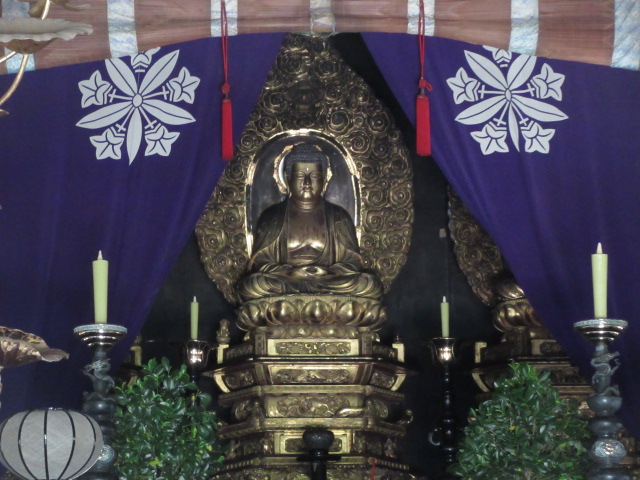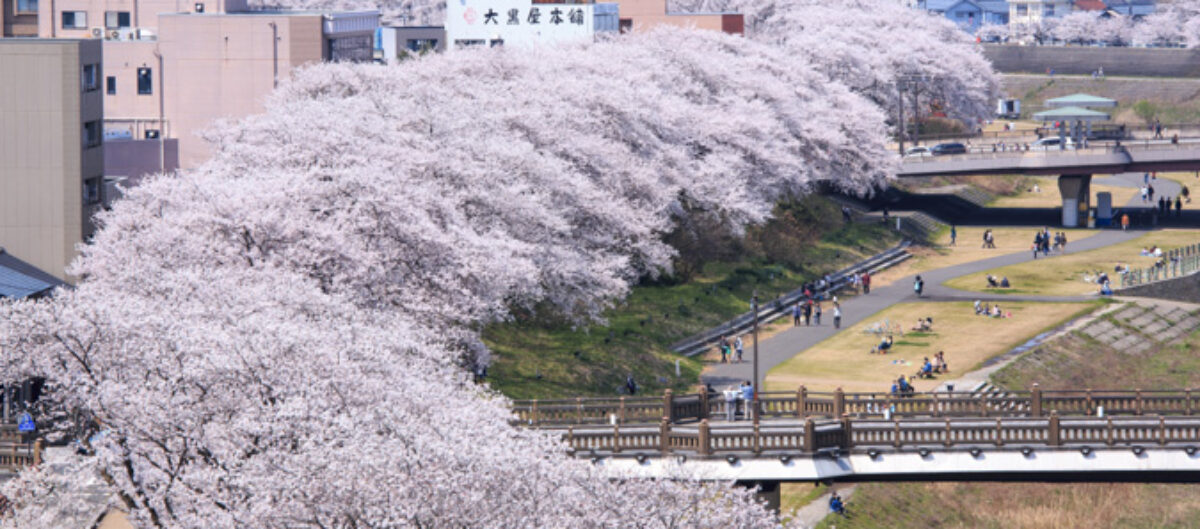
June/13/2022
Zen is a form of Buddhism, and it’s well known around the world. Eiheiji in Fukui is a world-renowned Zen temple.
Steve Jobs, the co-founder of Apple Computer, practiced Zen. He even thought about going to Eiheiji to become a monk. It’s said that Apple products have been influenced by Zen (in their simplicity, for example).
In the 2015 Michelin Green Guide Japan (a travel guide to Japan), Eiheiji was awarded two stars.
Eiheiji was founded by Dogen about 770 years ago. I’ve written about Dogen and Zen in previous entry.
Every year about 500,000 tourists and visitors go to Eiheiji, making it one of the main tourist spots in Fukui.
In my opinion there are three good points about Eiheiji:
- You can go inside the temple and see the places where the monks practice Buddhism.
- You might see some Zen monks there.
- The natural surroundings are beautiful.
There are about 160 monks at Eiheiji. As mentioned, you can go into the temple, and there you might see some Zen monks. I’ve seen a lot of them.



The natural environment outside Eiheiji is beautiful. There are some 700-year-old trees around the temple. When you go to Eiheiji, pay attention to these natural surroundings.

At the front gate the following words are inscribed on two stone pillars: 杓底一残水 汲流千億人. These mean that if after using a dipper you return the small amount of water that’s left in it to the stream, it will be valuable water that myriads of people can use. In other words, think about other people when you act.
After paying the entry charge, you go to the Kichijokaku (吉祥閣)(⑭). Before going into the building you have to take off your shoes and put on slippers (and put your shoes into a plastic bag).
You have to follow some rules when walking around inside Eiheiji:
- Walk on the left side of the walkways.
- Don’ take pictures of the monks.
- Don’t touch the bells or drums.
- Don’t go outside.
- Don’t consume alcohol inside the temple.
- If doing so isn’t an inconvenience, take off your hat.
You can’t take pictures of the monks, but you can take pictures of most of the Eiheiji buildings.

There’s an English map of Eiheiji, and I want to use that as a basis for describing the place.
1.Sanmon (山門)

The Sanmon is an entrance gate that marks the boundary between the secular world and the sacred area. New monks go through this gate when they first join Eiheiji. The gate was built in 1749.

To each side of it there are statues of the Shitenno (the Four Heavenly Kings), who are Buddhist guardian gods.

To each side of the pillars there’s a rectangular board on which are written the qualifications for joining Eiheiji. The right-hand board says家庭厳峻不容陸老従真門入,which means that Eiheiji is a very strict temple and that even if you have power, status, and fame, if you don’t have a desire for the truth, you can’t go through the gate. The left-hand board says鎖鑰放閑遮莫善財進一歩来, which means that the gate of Eiheiji is always open and that people who truly seek Buddhism can go through it anytime.
2. Butsuden (仏殿)

The Butsuden is a temple building where statues of Buddha are enshrined. There monks pray for the peace of the nation, abundance for all people, and the prosperity of Buddhism.
3. Hatto (法堂)
The Hatto is a place where the chief priest preaches to the monks and conveys the teachings of Buddha.
4. Sodo (僧堂)

The Sodo is a place where monks practice Buddhism (Zen meditation), eat, and sleep. You can’t go inside it. At three different places (the Sodo, Tosu, and Yokushitsu), monks aren’t allowed to speak.
5. Daikuin (大庫院)

The Daikuin is a kitchen and an office. Food for the monks is prepared there. In Zen, cooks hold a high position.

In front of the Daikuin there’s a four-meter rod-shaped pestle (大すりこぎ棒 in Japanese), and it’s said that if you rub it three times you’ll become a good cook.
6. Yokushitsu (浴室)

The Yokushitsu is a bathing facility. Monks go there and take baths six times a month (12 times a month in summer).
7. Tosu (東司)
The Tosu is a toilet. It’s believed that going to the toilet is also an important component of Buddhist training.
8. Joyoden (承陽殿)
The Joyoden is a holy place that contains the grave of Dogen, the founder of Soto Zen. You’re not allowed to take photographs there.
9. Shorodo (鐘楼堂)

The Shorodo is a hole where there’s a large hanging bell that weighs about 5,000 kilograms. Usually the bell rings four times a day. Most of the monks at Eiheiji don’t wear watches, and they tell the time by the bell.
10. Chokushimon (勅使門) (also called Karamon (唐門))

The Chokushimon (or Karamon) is a gate, and you can see it without going into Eiheiji. It’s the symbol of the temple, and pictures of it often appear in books about Eiheiji. Usually the gate is closed, but when a new chief priest arrives, it’s opened.
11. Chujakumon (中雀門)

The Chujakumon too is a gate, and when monks pass through it they always bow to the Butsuden.
12. Shidoden (祠堂殿)
The Shidoden is a hall where a lot of ihai are enshrined. (An ihai is a wooden tablet inscribed with the posthumous Buddhist name of a deceased person so that it can enshrine the spirit of the person.) At this hall memorial services are performed.
13. Sanshokaku (傘松閣)


The Sanshokaku is a large hall built in 1995. On the ceiling are 230 paintings by 144 famous painters who worked in the Japanese style. This is a good place for taking pictures. I enjoyed looking at the paintings.
14. Kinchijokaku or Kichijokaku (吉祥閣)
On the map this place is called the Kinchijokaku, but the correct name is the Kichijokaku. It’s a training hall for lay believers and ordinary people.
Eiheiji has been through a lot of fires, and the temple has been rebuilt every time.

The temple has a lot of stairs, so it’s difficult for elderly people to walk through it. When you’re walking inside the temple you might notice how clean the floors are. This is because the monks clean them every day. Cleaning the floors is also an important form of training for them; by doing it they polish their minds.
Outside Eiheiji’s buildings there are information boards in both Japanese and English, so it’s easy to see what the buildings are and what functions they serve. It takes an hour to see all Eiheiji’s buildings.

The monks’ daily schedule at Eiheiji is a full one. They get up at 3:00 in summer and 4:00 in winter. After washing their faces they go to the Sodo and practice sitting meditation for 50 minutes. They chant a sutra for about an hour, and then they have breakfast. After that they clean the corridors, then clean the gardens and buildings, and then have lunch. After that they work and clean again, and then they have dinner. They practice sitting meditation for about two hours, and at 9:00 they go to bed.
Usually monks stay at Eiheiji for a year. After that they go to temples in their own towns.
At Eiheiji you can practice sitting Zen (sitting meditation) or stay for a night. If you want to know more about this, check out Eiheiji’s official English website.

Japanese culture has been greatly influenced by Zen, and Eiheiji is one of the meccas of Zen. It’s easy to get to Eiheiji from the city of Fukui, so if you’re interested in Japanese culture, why don’t you go?
——-Access to Eiheiji———-
You can take either a taxi or the Eiheiji Liner Bus from Fukui Station to Eiheiji, and both take about 30 minutes.(The English website for the Eiheiji Liner Bus can be found here.) The round-trip bus fare is 1,500 yen for adults and 750 yen for children. You can buy tickets at the Keifuku Bus Ticket Center next to JR Fukui Station.

(Reference)
「道元禅師の寺を歩く」(協力 大本山永平寺)(JTBパブリッシング)

Thank you!
You’re most welcome.